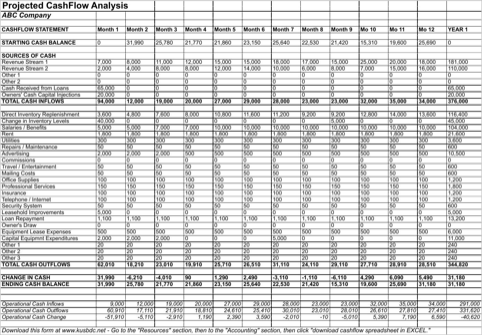Contents
Company management’s selections on monetary policy, funding technique, and operations are all idiosyncratic risks particular to a specific company and inventory. Other examples can embrace the geographical location of operations and corporate tradition. Unsystematic risk, also referred to as diversifiable threat, is the uncertainty related to a person inventory or industry.

On the other hand, too much of a fall in commodity prices could pose deflationary risks. For instance, if the nominal return on a 1-year fixed deposit is 10% and the prevailing rate of inflation in the economy is 6%, then the real rate of return, based on the above formula, is 3.77%. This means after adjusting for inflation, the investor would have earned around 3.77% on his/her investment. When looking out for investment opportunities, it is important to focus on the real rate of return and not just the nominal rate. An instrument might give a nominal rate of 5% but if the prevailing rate of inflation in the economy is more than 5%, then the real return would be negative.
Our experts suggest the best funds and you can get high returns by investing directly or through SIP. The opposite of systemic risk, unsystematic risk, has an effect on a very particular securities group or individual security. Let us take an example to understand the security market line better. Let’s say that the risk-free rate is 5% and the value of the expected market rate of return is 14%. One security has a beta value of 0.5 and another has a beta equal to 1.5. The graph’s X-axis has systematic risk, which is measured by beta, while the expected returns are on the Y axis.
Get smart about systematic and unsystematic risk
Hence, to reduce the impact of interest rate risk, one needs to have a well-diversified portfolio comprising not only of bonds but also equities. As said earlier, equities are not directly impacted by changes in interest rates. Furthermore, until the time https://1investing.in/ economic growth and corporate earnings remain firm, equities could continue rising even if interest rates are moving higher. Also, bonds with long durations tend to be much more sensitive to changes in interest rates than bonds with short durations.
Therefore, one can sum up all the Clayton Copula parameters, and the upper the sum of those parameters, the higher the upcoming likelihood of systemic threat. In distinction, systematic risk cannot be mitigated simply by adding more property to an funding portfolio. It is also referred to as “Specific Risk”, “Diversifiable threat” or “Residual Risk”. These are dangers which are current but are unplanned and may happen at any level in inflicting widespread disruption. Once risks are identified, corporations take the appropriate steps to handle them to protect their enterprise property. The most common kinds of danger management methods embody avoidance, mitigation, transfer, and acceptance.
Have your own odds-based system to beat the market
In the last tutorial, we discussed factor investing and its evolution from CAPM . In this article, we will discuss more about CAPM and a good example for systematic risk is why it so widely used by fund managers across the globe. Systemic risk works by creating a ripple effect that starts from one outcome.
At the same time, for systematic risk, there are multiple factors. Here, there is no single factor that affects the economy but a handful of factors. Another famous example of the same is the economic crisis of 2000. Here, too, there is no one single factor but many factors that contributed to the situation.

In terms of trade or sector, an example of idiosyncratic threat for mining firms would be the exhaustion or the inaccessibility of a vein or a seam of steel. Likewise, the potential of a pilots’ or a mechanics’ strike could be an idiosyncratic threat for airline corporations. According to the Property Casualty Insurers Association of America, there are two key assessments for measuring systemic threat, the “too huge to fail” and the “too connected to fail” checks. First, the TBTF test is the traditional analysis for assessing the chance of required government intervention. A vine copula can be used to model systemic danger across a portfolio of economic assets. The impact is measure past the institution’s merchandise and activities to incorporate the financial multiplier of all different commercial actions dependent specifically on that establishment.
What is Unsystematic Risk?
Therefore, if the market indicates a downfall, then even a good performing company will encounter problems, and ultimately, the price of its shares will fall. It is a graphical representation of an investment opportunity cost. Login to get instant access to this article and many other such articles on business development, success stories and industry updates. According to the dictionary, risk refers to the possibility that something unpleasant or dangerous might happen. When I could not understand a topic, the faculty support too was good. Time management is very much important in IIT JAM. The eduncle test series for IIT JAM Mathematical Statistics helped me a lot in this portion.
- In the next chapter, we will discuss different types of unsystematic risks that investors are exposed to.
- For example, the changes in the tax policy, inflation, customer demands, and interest rates are some of the factors that affect the company’s stock price but have nothing to do with its managerial skills.
- Hence, during periods of fluctuating interest rates, one could reduce exposure to bonds that have long durations and increase exposure to bonds having short durations.
- However, such risks can be cushioned, through hedging and asset allocation.
- Systematic risk is also called the undiversifiable risk, market risk, or volatility.
For instance, the collapse of Lehman Brothers is said to be the root cause of the economic crisis of 2008. We get the clearest picture of systemic risk during and after an economic crisis. This is because most economic crises are an affect effect of systemic risk. Hence, experts believe that the best course of action to reduce systemic risk is by taking steps to avoid an economic crisis.
Unsystematic threat is also referred to as residual risk, specific danger or diversifiable risk. For example strikes, lawsuits and such events that are specific to a company, and might to an extent be diversified away by other investments in your portfolio are unsystematic threat. Proper asset allocation, together with hedging methods, can decrease its adverse influence on an funding portfolio by diversification or hedging.
Systematic risk, also known as “undiversifiable risk,” “volatility” or “market risk,” affects the overall market, not just a particular stock or industry. Since all fashions aren’t geared in the direction of this situation, all individuals in an illiquid market using such fashions will face systemic risks. The conventional analysis for assessing the chance of required authorities intervention is the “too massive to fail” take a look at .
Authorities should increase macroeconomic and financial surveillance as well, experts believe. This can help the government see a crisis sprouting and dom needful to prevent it from growing. Government should also be able to provide supervision in the same with the help of the central bank. Systemic risk is defined as the risk of potentially collapsing an economy.
Systematic Risk vs Unsystematic Risk Infographics
MNCs, Export companies, or all those companies that rely on foreign materials, products, or currency, thus encounter exchange rate risk. An investor encounters systematic risk due to economic, sociological, or political changes affecting the market. However, total risk comprises two risk variations, systematic risk and unsystematic risk, and in this article, we’ll thoroughly discuss Systematic Risk. In the graph, as the risk assumed by the security increases, the expected return also increases.
A single event will start a ripple effect that causes a major economic crisis. However, most systematic risk belongs to market risk; that’s why systematic risk is often identified as the market risk. Subsequently, the market risk is defined as the tendency of security and prices that are likely to move together. In short, any risk that occurs due to microeconomic factors can be called systematic risk.
If fund managers have no skill, unsystematic risk has no reward and should not be taken. Only if you are convinced that the managers you are considering have the ability to outperform their benchmark indexes after fees should you invest in their funds. In other words, only include unsystematic risk in your risk budget if you believe that you have identified managers that are likely to generate positive alpha. The long-term average additional performance that you expect of an actively managed fund is called the fund’s alpha.
In this chapter, we will continue from where we left off previously and discuss some of the key unsystematic risks that an investor needs to be aware of, at all times, as well as how to mitigate them. Risk that affects the portfolio due to the prevailing market conditions such as interest rate risk, recession, wars, etc. are few examples of systematic risk. Therefore you should be suspect of strategies that claim to maximize diversification, minimize risk, or achieve risk parity across asset classes but do not make reference to expected returns. You take on investment risks if you believe that by doing so you will eventually reap the reward of returns above those available through risk-free assets such as liquid funds or bank deposits. Otherwise you would just keep your money in risk-free securities.

